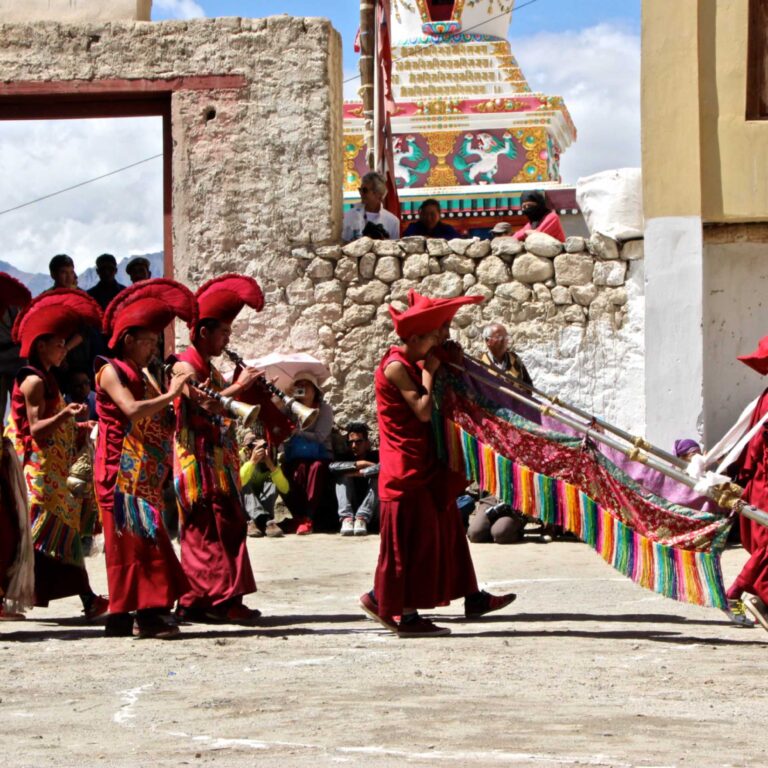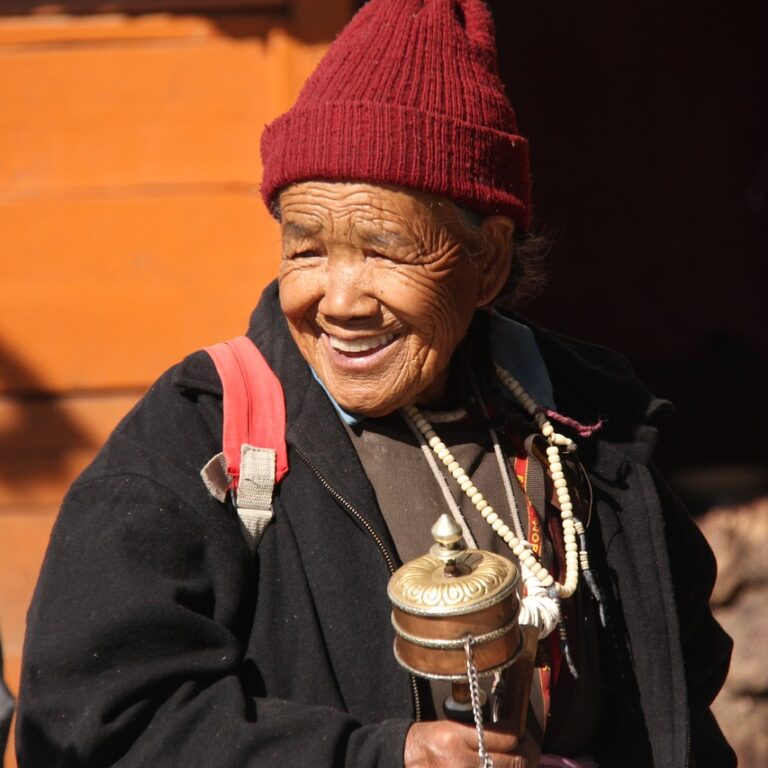About Ladakh



About Ladakh
Land Of Lamas
“In Ladakh, mountain peaks soar as high as the eye can see, this is truly a place where the heavens meet earth!”
Lying in between two of the highest mountain ranges in the world—the Karakoram Range in the north and the Himalayan Range in the south—Ladakh’s altitude ranges from 9,000 feet (2750m) at Kargil, 11,500 feet (3500m) at Leh, to 25,170 feet (7672m) at Saser Kangri in the Karakoram Mountains.
About Ladakh
Land Of Lamas

“In Ladakh, mountain peaks soar as high as the eye can see, this is truly a place where the heavens meet earth!”

Lying in between two of the highest mountain ranges in the world—the Karakoram Range in the north and the Himalayan Range in the south—Ladakh’s altitude ranges from 9,000 feet (2750m) at Kargil, 11,500 feet (3500m) at Leh, to 25,170 feet (7672m) at Saser Kangri in the Karakoram Mountains.

Renowned for its beauty and culture, an extensive lake system once covered Ladakh, the remnants of which still exist to this day in the form of Tso-moriri, Tso-kar, and the grandest of them all, Pangong Lake. The summers in Ladakh can rise to 35°C (95°F), while in the winters the temperature plummets to -20°C (-16.6°F), resulting in heavy snowfall
and the closure of the high passes.
For nearly 900 years, Ladakh stood as an independent kingdom, governed by dynasties whose lineage traced back to the ancient kings of Tibet, who acknowledged the Grand Lamas as their Suzerains. The kingdom reached its pinnacle of glory under King Singey Namgyal during the 17th century, when his reign expanded across Spiti and western Tibet, encompassing revered sites like Mount Kailash and Lake Mansarovar.
This period of political stability was the reason why Ladakh became a major trade route between Punjab and Central Asia. Caravan after caravan traversed the rugged terrain carrying textiles, spices, silk, etc., with Leh emerging as the designated midway stop. A bustling entrepot with bazaars thronged with merchants and exotic goods from distant lands.
Renowned for its beauty and culture, an extensive lake system once covered Ladakh, the remnants of which still exist to this day in the form of Tso-moriri, Tso-kar, and the grandest of them all, Pangong Lake. The summers in Ladakh can rise to 35°C (95°F), while in the winters the temperature plummets to -20°C (-16.6°F), resulting in heavy snowfall
and the closure of the high passes.
For nearly 900 years, Ladakh stood as an independent kingdom, governed by dynasties whose lineage traced back to the ancient kings of Tibet, who acknowledged the Grand Lamas as their Suzerains. The kingdom reached its pinnacle of glory under King Singey Namgyal during the 17th century, when his reign expanded across Spiti and western Tibet, encompassing revered sites like Mount Kailash and Lake Mansarovar.
This period of political stability was the reason why Ladakh became a major trade route between Punjab and Central Asia. Caravan after caravan traversed the rugged terrain carrying textiles, spices, silk, etc., with Leh emerging as the designated midway stop. A bustling entrepot with bazaars thronged with merchants and exotic goods from distant lands.
Ladakh’s rich heritage is deeply intertwined with Tibetan culture, as reflected in the region’s language and cuisine. Ladakhi, a Tibetan dialect with a shared script, is the cultural unifier among locals. At the same time, traditional Ladakhi dishes like Thupka, Noodle Soup, and Tsampa resonate with the centuries-old Tibetan culinary traditions, bridging the present with the past.
In Leh, explorers can indulge in Tibetan, North Indian, Indo-Chinese, Italian, and even Korean cuisine. This culinary diversity showcases Ladakh’s adaptation to modern tourism while celebrating its Tibetan heritage.





Ladakh’s rich heritage is deeply intertwined with Tibetan culture, as reflected in the region’s language and cuisine. Ladakhi, a Tibetan dialect with a shared script, is the cultural unifier among locals. At the same time, traditional Ladakhi dishes like Thupka, Noodle Soup, and Tsampa resonate with the centuries-old Tibetan culinary traditions, bridging the present with the past.

In Leh, explorers can indulge in Tibetan, North Indian, Indo-Chinese, Italian, and even Korean cuisine. This culinary diversity showcases Ladakh’s adaptation to modern tourism while celebrating its Tibetan heritage.
